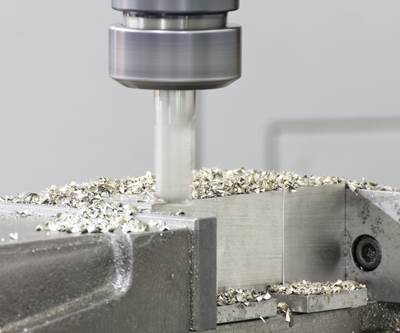Tooling Tips For High Productivity Milling
Today's machining centers feature higher spindle speeds and feed rates, but if you want to push this capability to the limit, there are some tooling considerations that must be addressed.
Share









Hwacheon Machinery America, Inc.
Featured Content
View MoreThough high-speed machining, be it milling or turning, is one of the hottest topics today, there are many ways to define what it means. Some say it's spindle speeds running over some specified minimum rpm. Others define it as high cutting speeds or feeds, or a combination of the two. Whatever the definition, obviously it's not just a matter of tooling up CNCs with the right cutting tools, then ramping them up, otherwise we'd have nothing to talk about.
We prefer to think in terms of productivity, so high-productivity machining (HPM) is a term we're suggesting for when you optimize both speeds and feeds up to a point of diminishing returns, whether or not those speeds and feeds meet someone else's definition of "high speed machining." The rationale is that higher output is only beneficial if the end result is good parts, minimum rework and near-zero scrap. You also want to be sure you don't get the output at the expense of early retirement of your expensive CNC center due to excessive wear and tear.
There are many factors to consider before you decide whether you are a candidate for HPM. A lot depends on your application, workpiece, material, depth of cut, workload, and so on. The main application areas for HPM today include injection and blow dies and molds, forging dies, prototyping dies and electrodes.
Users have reported successes using materials such as high-alloy tool steels, heat resistant superalloys, bimetal compositions, stainless steel alloys, aluminum, compact graphite iron and copper. Principal beneficiaries of HPM are the aerospace, automotive, electric/electronic and defense industries. As machine shops become more savvy and comfortable with HPM, applications will undoubtedly expand quickly.
The purpose of this article is to sort out "friendly" conditions for HPM, then cover the prerequisites in milling tool selection to get maximum output from CNC machining centers.
Running Faster But Smarter
What are the advantages of HPM?
- Better utilization of fixed assets. Once a shop has invested in a fully equipped CNC mill, it wants to make sure the machine is producing and performing as close to capacity as possible.
- Higher metal removal rates, therefore, improve productivity and lower costs. This creates a competitive edge and the ability to meet just-in-time deliveries.
- Lower cutting forces and heat leading to lesser risk of tool deflection and workpiece distortion. This is important for any job, but especially when milling harder metals or thin-wall workpieces.
- Better surface quality. Generally, at the higher speeds and feeds, machining involves taking shallower DOCs with harder, more stable and larger diameter tools. The result is lower runout; smoother cuts; and fewer burrs and chatter marks.
- Better chip removal rates. Chips are smaller and evacuated more easily.
That is the case even when machining dry.
Slow Down, You're Going Too Fast
When you review these benefits, you'll probably question why the HPM fever hasn't caught on over a larger cross-section of industries. To begin answering, consider the life of wheel bearings on a sports-coupe driven at city speeds. Then, compare that to the life of wheel bearings on the same car driven at 200 mph on a high-speed highway. Which will last longer? The analogy to HPM is clear, and the moral is that the advantages also bring disadvantages. So, a number of issues must be addressed. Here are some of them:
- Machine guideways, ball screws and spindle bearings will wear faster due to spindle start and stop and higher acceleration and deceleration rates. As a result, machine tool maintenance can become a problem requiring more frequent service and/or component replacements.
- Specific high-speed process, programming and data transfer interface expertise is needed. That in turn means recruitment of more advanced staff at higher wages.
- Systematic planning is necessary to line up work in advance to "feed" the "hungry" CNC.
- "Trial and error" periods for new workpieces may be needed.
- Human, hardware or software errors could mean big losses if the CNC cannot be stopped quickly enough to correct the problem.
- Extra safety precautions must be in place. Example: an insert breaking loose from a 40 mm diameter milling cutter at a spindle speed of 40,000 rpm will be ejected at a speed of 84 meters per second. That's the equivalent of a bullet fired from a pistol! Precautions include sturdier safety enclosures, such as steel or high impact polycarbonate plastic. Screws and tools with long overhangs and adapters need to be checked regularly for fatigue cracks. HSS tools are out. Solid workholding and toolholding are in. The tooling manufacturer's guidelines for speeds and feeds must be followed scrupulously.
The Process Angle
Here's what's required on the process side.
- Dedicated machine tools, cutting tools and controls designed for the specific HPM process. This means extra cost and inventory, so a shop should investigate whether the productivity gains outweigh the investment.
- Advanced programming techniques with the most favorable tool paths. This calls for expert programming staff to handle these requirements.
- Either high part volumes or small specialized batches.
- Depth of cut and average chip thickness lower than with conventional machining.
- Dry milling with compressed air or oil mist under high pressure.
The Right Tooling
Contrary to popular belief, machine tool capabilities are not ahead of tooling where performance is concerned. Both solid and indexable tooling for HPM is already available today. However, it is a question of selecting the right holder, insert, and tool/machine interface. Here are some guidelines:
- Use dedicated inserts for each roughing, medium machining and finishing operation.
- Select tools with rugged, rigid construction. Carbide tools provide the best rigidity. Avoid HSS tools.
- Select oversized, tapered shanks, especially for small diameters.
- Short, stubby tools are preferable. Avoid long overhangs.
- Symmetrical, factory balanced tools are essential. Even adding a simple label could throw off a tool's balance, as shown in Figure 1.
- Cutter bodies should be designed to provide copious chip clearance.
- Cutter bodies should incorporate holes for air blast or coolant.
- High-precision tip seats and inserts are mandatory. Total TIR from the two combined should be no more than 10 microns. Comparable numbers for grinding should be lower than 3 microns. The influences of runout on surface quality and tool life are illustrated in Figures 2 and 3, respectively.
- Inserts made from micrograin substrates will provide maximum stiffness and durability.
- Inserts with reinforced cutting edges will provide higher security.
- If at all possible, select short edges for lowest possible risk of vibration.
- Durable, heat resistant insert coatings, such as titanium aluminum nitride (TiAlN) will wear better.
- Each tool's maximum allowable rpm should not be exceeded.
- A solid, stable tool/spindle interface is essential to avoid vibration.
Thin-Walls, Hard Metals
Sensitive applications, such as milling of thin-walled or hard metal workpieces, can greatly benefit from HPM. Reason is that tool/workpiece engagement time is shorter than with conventional milling, therefore cutting pressure and forces are much reduced (Figures 4 and 5). When feed rates are higher than the time it takes to propagate heat, there is less heat produced in the workpiece (Figure 6). Less heat, in turn, means lower risk of distortion. This is especially important when working with thin walls or hard metals.
A Word About Coolants
Can dry milling also be extended to HPM? For the most part, the same benefits obtainable from turning off the cutting fluid in conventional milling applications also apply to HPM. In general, when milling, cutting fluid can do more harm than good, because it increases the thermal shock on cutting edges. To a large degree, most of the cutting fluid converts to steam anyway when it hits the hot cutting zone, so the cooling benefit is lost. Eliminating liquid coolant can boost tool life 25 to 50 percent in many cases and save about 15 to 20 percent in coolant and disposal costs.
However, there are a few exceptions to the cutting fluid "rule" for HPM. Dry machining is not recommended in these situations:
- When machining sticky materials, such as low carbon steel and stainless steel.
- When finishing aluminum and stainless steel to prevent smearing of small particles damaging the surface. The coolant lubricates the area and helps evacuate these particles.
- When machining thin-wall components to prevent geometrical distortion.
In instances when it is necessary to apply copious amounts of cutting fluid, select a cemented carbide insert with a tough substrate and multilayer coatings. The preferred alternative to liquid coolant is compressed air and oil mist under high pressure as the second choice. With cermet, ceramic or cubic boron nitride inserts, coolant should not be considered an option at all.
Tooling Is Not An Obstacle
The key to optimizing capacity lies in keeping big-ticket machinery working, in cutting at optimum rates for the material and, above all, in minimizing idle machine time. It is best to look at the total productivity picture to see the value of optimizing speeds, as well as feeds, without losing part quality or incurring rework or scrap.
Tooling is not an obstacle for those who want to implement high-productivity machining. Rather, users have to apply different tool selection criteria and machining techniques than with conventional milling. Any of today's machining centers will perform as well as its tooling allows. And you can control which tooling goes on that machine.
About the authors. Andy Pitsker is Product Manager Tooling Systems and Steve Piscopo is Product Manager Milling Tools with Sandvik Coromant in Fair Lawn, New Jersey. They can be reached at (201) 794-5000, fax (201) 794-5217.
Related Content
The Impact of Cutting Teeth Spacing on Machining Stability
Many cutter designs are available, and variable teeth spacing (or variable pitch) cutters can be used to influence milling stability. Let’s discuss why teeth spacing affects stability.
Read MoreThe Future of High Feed Milling in Modern Manufacturing
Achieve higher metal removal rates and enhanced predictability with ISCAR’s advanced high-feed milling tools — optimized for today’s competitive global market.
Read MoreHow to Mitigate Chatter to Boost Machining Rates
There are usually better solutions to chatter than just reducing the feed rate. Through vibration analysis, the chatter problem can be solved, enabling much higher metal removal rates, better quality and longer tool life.
Read MoreHow to Troubleshoot Issues With Tool Life
Diagnosing when a tool is failing is important because it sets an expectation and a benchmark for improvements. Finding out why gives us a clue for how to fix it.
Read MoreRead Next
Tool Considerations for High Speed Cutting
Fast CNC processing and high-pressure coolant contribute to removing metal at dramatic rates. But what should a shop know about cutting tools in high speed machining?
Read MoreRegistration Now Open for the Precision Machining Technology Show (PMTS) 2025
The precision machining industry’s premier event returns to Cleveland, OH, April 1-3.
Read More5 Rules of Thumb for Buying CNC Machine Tools
Use these tips to carefully plan your machine tool purchases and to avoid regretting your decision later.
Read More


























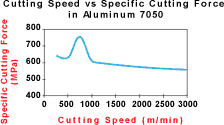
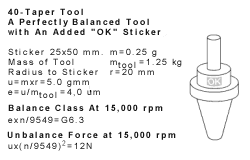

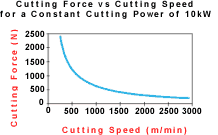

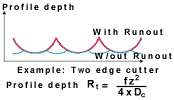








.png;maxWidth=300;quality=90)















